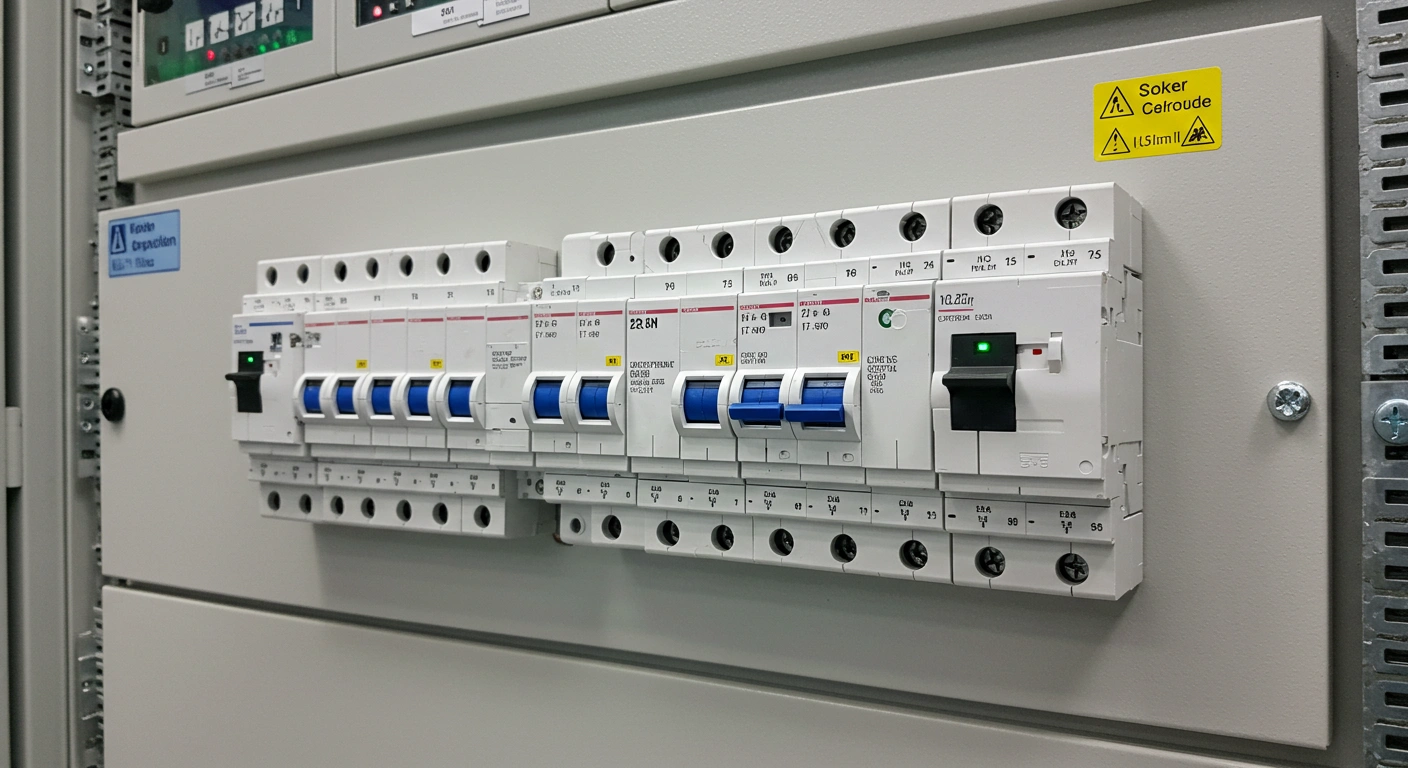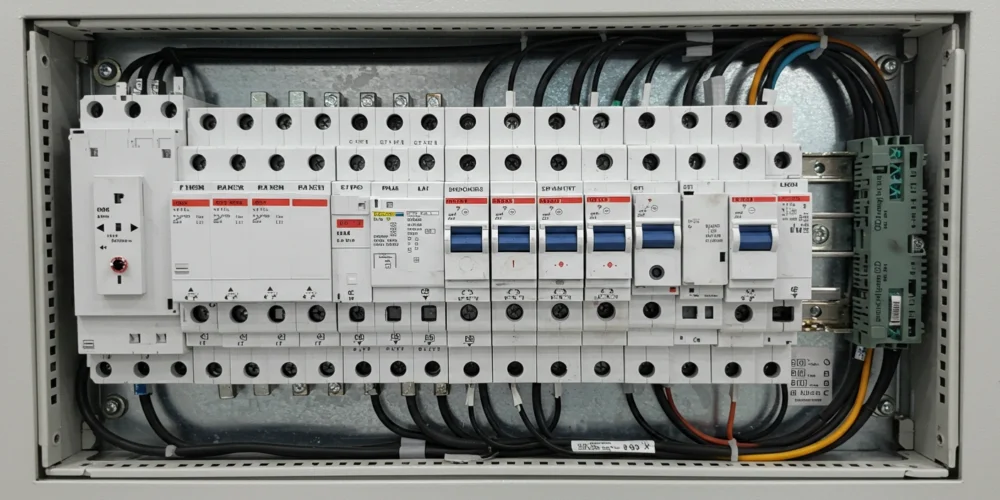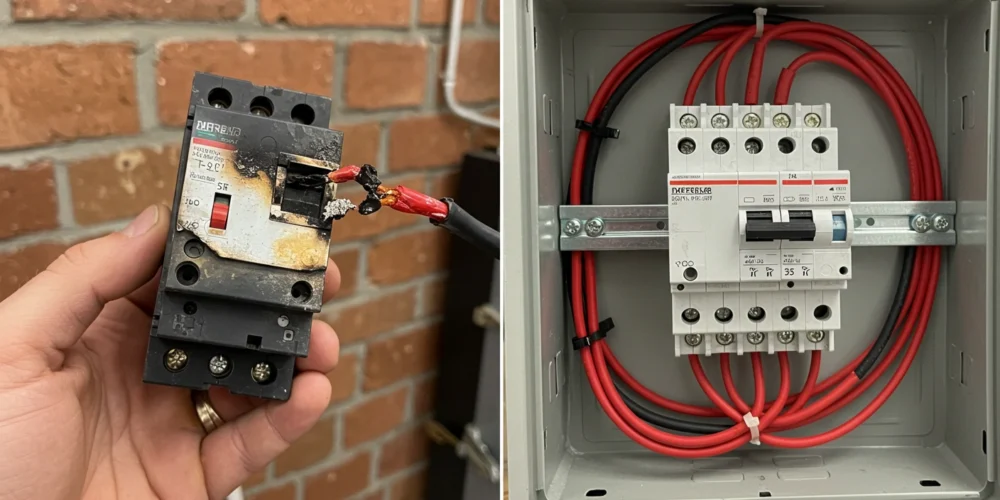
18 Jul Why Your Safety Switch Keeps Tripping: Common Causes
If you’ve ever been in the middle of something important, and suddenly the power cuts out for no reason, it’s pretty frustrating. Even worse, if you’re not sure why it’s happening, it can leave you feeling a bit anxious. When your safety switch keeps tripping with nothing plugged in, it’s a problem that needs to be sorted, and it’s more common than you might think.
A safety switch is there to protect you and your family from electrical hazards. So, when it trips, it’s doing its job, but you might wonder why it’s happening when there’s nothing plugged into the power points. Let’s take a look at why this happens and how you can fix it.
What is a Safety Switch and How Does It Work?
A safety switch, or Residual Current Device (RCD), is an important part of your home’s electrical system. Its job is to monitor the flow of electricity through the circuit and protect you from electrical shock. If the safety switch detects any imbalance, it shuts off the power to prevent dangerous situations, such as fires or electric shocks.
The switch trips when it notices something’s wrong, like a short circuit, faulty wiring, or if electricity is leaking somewhere it shouldn’t be, such as into the ground. It’s a good thing it trips because it’s stopping dangerous situations from happening. However, if it keeps tripping, there’s an issue that needs to be addressed.
Common Causes of a Tripping Safety Switch
If your safety switch keeps tripping with nothing plugged in, don’t panic. It might sound strange, but it’s actually something that can happen. Below are some of the common reasons your safety switch might be tripping.
Faulty Wiring or Old Wiring
Sometimes, the issue lies with the wiring in your home. If your home has old or faulty wiring, it can cause the safety switch to trip. Over time, wires can become worn, corroded, or damaged. If this happens, it can cause electricity to leak, which trips the safety switch.
Gold Coast homes, especially older ones, can sometimes have wiring that’s not up to scratch. With the humid and salty air from the coast, wiring can deteriorate faster than you might expect, which is why homes here need regular electrical checks.
Faulty wiring could be the cause of your tripping safety switch. If you have old or damaged wiring, consider a switchboard upgrade to ensure everything is up to modern standards.
A Faulty Safety Switch or Circuit Breaker
Sometimes, the issue isn’t the wiring or moisture; it could be a faulty safety switch itself. If your switch is old or damaged, it may trip unnecessarily. This could happen even when there’s no real fault in the system. If the switch trips all the time, even when there’s nothing wrong, it’s a sign that the switch might need replacing.
Overloaded Circuits
Even though nothing is plugged in, an overloaded circuit can trip the safety switch. This happens when too many appliances are plugged into a single circuit or when circuits are not balanced properly. Even if you think no devices are using power, the wiring itself can cause issues if there’s too much strain.
How to Fix a Tripping Safety Switch

If your safety switch is tripping regularly, don’t just keep resetting it. Here are some things you can try before calling in the experts:
Reset the Safety Switch
Sometimes, a quick reset is all it takes. Simply press the reset button on the switch to restore the power. If the switch trips again immediately or soon after resetting, there’s a deeper issue that needs attention.
Check for Moisture
If you suspect moisture is the issue, check areas that are more likely to be damp. Look around power points, switchboards, and areas near pipes or water sources. If moisture has seeped into the system, it’s important to dry everything out properly. If the problem persists, you may need a professional to inspect and fix any damaged wiring.
Inspect the Circuit for Overloading
If you’re unsure whether you’ve overloaded a circuit, it’s worth checking how many appliances are connected to the same outlet. Even if nothing’s plugged in now, check the circuit and make sure it hasn’t been overloaded in the past. You may want to have your electrical system checked by an electrician to make sure everything’s in balance.
Check the Wiring
If you have an older home or suspect that the wiring could be faulty, it’s worth getting an electrician to inspect it. Faulty or damaged wiring is one of the most common causes of a tripping safety switch. A licensed professional will be able to identify any issues with the wiring and replace it if necessary.
When Should You Call a Professional Electrician?
If the safety switch keeps tripping after you’ve tried these fixes, it’s time to call in a professional. Electricians have the right knowledge and tools to safely inspect your home’s electrical system. Here’s when you should call a professional:
- If the safety switch continues to trip even after resetting it.
- If you suspect moisture or water is causing the issue.
- If you notice signs of faulty wiring or damaged power points.
- If you have an older home with wiring that hasn’t been updated in years.
A licensed electrician will be able to properly identify the root cause of the problem and make the necessary repairs, keeping your home safe.
How to Prevent Safety Switch Tripping in the Future
To prevent your safety switch from tripping in the future, there are a few things you can do:
1. Schedule Regular Electrical Inspections
Make sure you have your electrical system checked by a professional every few years. Regular inspections can catch problems like faulty wiring or overloaded circuits before they cause major issues.
2. Keep Electrical Components Dry
Especially in Gold Coast homes, be aware of moisture. Make sure power points and switches are kept away from water sources. If you live in a high-humidity area, you might want to consider using weatherproof outlets for outdoor use.
3. Don’t Overload Circuits
Be mindful of the number of appliances you plug into each outlet. Don’t overload circuits, as it can cause overheating, and the safety switch will trip to prevent a fire.
4. Replace Old Safety Switches
If your safety switch is old or keeps tripping without cause, consider having it replaced. A modern safety switch is more reliable and can offer better protection against electrical faults.
Protecting Your Home from Electrical Hazards

If your safety switch keeps tripping with nothing plugged in, it’s important to understand that there’s an underlying issue that needs fixing. Whether it’s faulty wiring, moisture, or an overloaded circuit, don’t ignore the problem. Always prioritize safety and call a professional electrician if you can’t resolve the issue yourself.
Remember, your safety switch is there to protect you, and keeping it in good working order is essential for a safe home. If you’re unsure about any electrical issues, get in touch with a licensed electrician to ensure everything is up to code and working properly.
FAQs
It could be caused by faulty wiring, moisture, a damaged safety switch, or an overloaded circuit.
Check for moisture, reset the switch, avoid overloading circuits, and inspect the wiring. If the issue persists, call a professional electrician.
You should have your electrical system inspected by a professional every few years or if you notice problems with the switch tripping.
Replacing a safety switch is a job for a licensed electrician to ensure it’s done safely and up to Australian standards.







Sorry, the comment form is closed at this time.